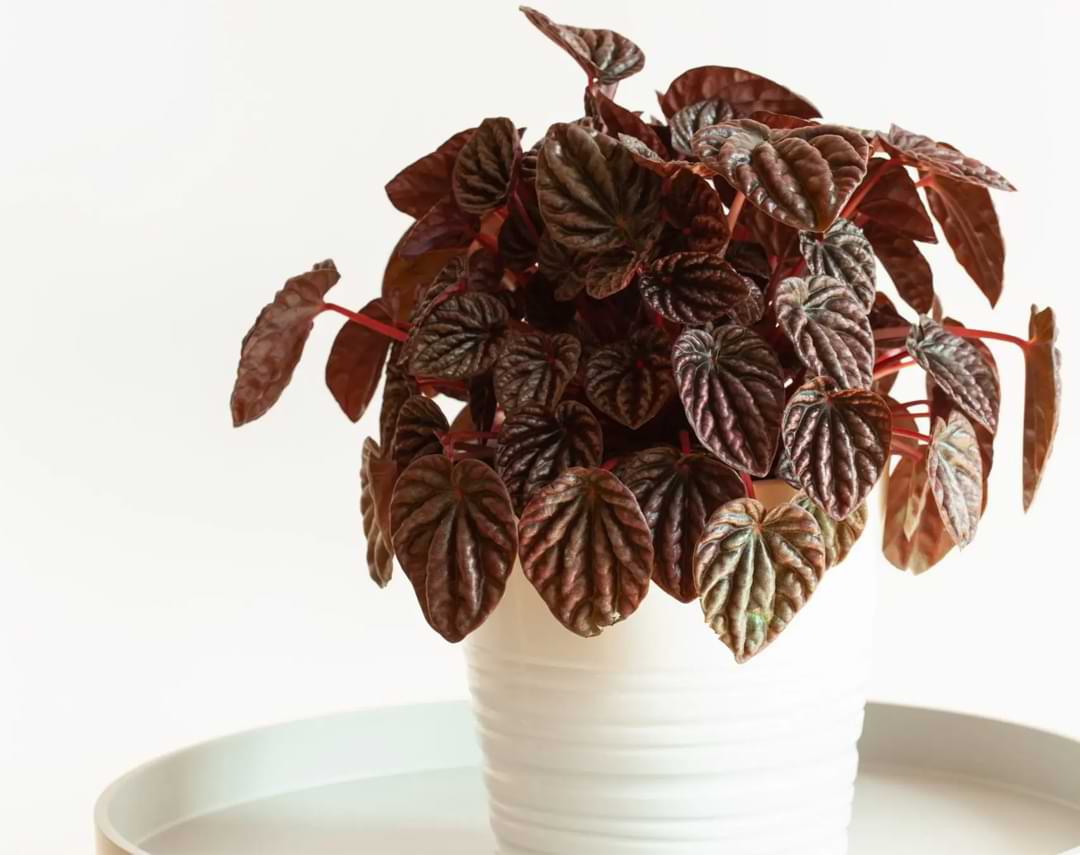Peperomia plants are a great choice if you want beautiful, colorful foliage without a lot of work. In our ultimate guide to Peperomia varieties, you’ll see that they come in different colors of green, white, yellow, red, even pink!
Let’s take a look at some of the most popular peperomia varieties you’ll find online or in your local garden store as well as some of the rarer varieties for the houseplant collector who can’t get enough beautiful and unusual indoor plants.
Table of Contents
- Peperomia Varieties
- Watermelon peperomia (Peperomia argyreia)
- Metallic peperomia (Peperomia rosso)
- Jayde Peperomia (Peperomia polybotrya)
- Baby Rubber Plant (Peperomia obtusifolia)
- String of Turtles Peperomia Plant (Peperomia prostrata)
- Trailing Jade (Peperomia rotundifolia)
- Peperomia Hope (Peperomia tetraphylla)
- Peperomia Jelly (Peperomia clusiifolia)
- Red Ripple Peperomia (Peperomia caperata)
- Emerald Ripple Peperomia (Peperomia caperata)
Peperomia Varieties
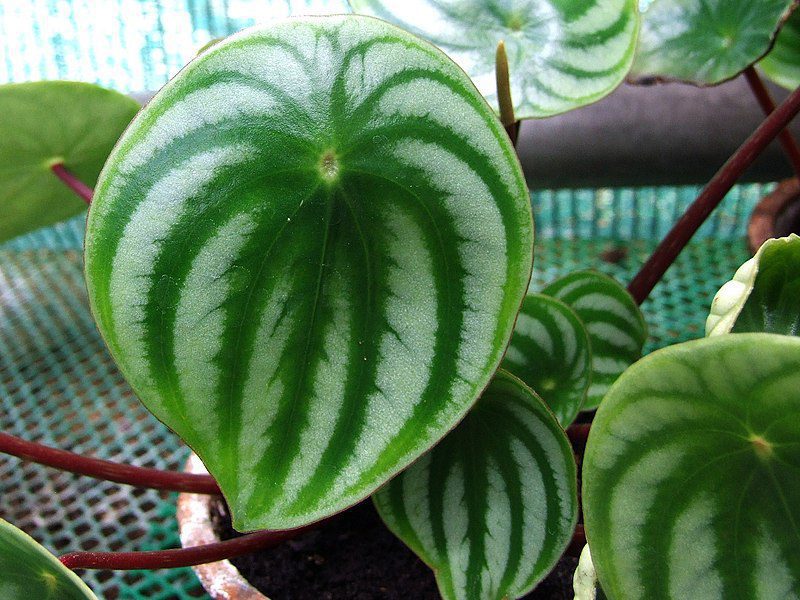
Watermelon peperomia (Peperomia argyreia)
This gorgeous variety sports rounded, slightly pointed leaves with dark-green and silvery light-green stripes, a lot like the outside of a watermelon!
This one of the peperomia varieties grows to about 8 inches tall, so it’s a great choice for tight spaces where you want a splash of life and color.

Metallic peperomia (Peperomia rosso)
The leaves on this variety are much more pointed than a lot of other types of peperomias. The tops are dark green with a silvery sheen while the bottoms of the leaves are deep red. This variety can flower if it receives enough bright, indirect light, but the dark color makes it ideal for spaces with less natural light.
If your home is on the darker side or if you want some houseplant life in a darker room, give this variety a try!
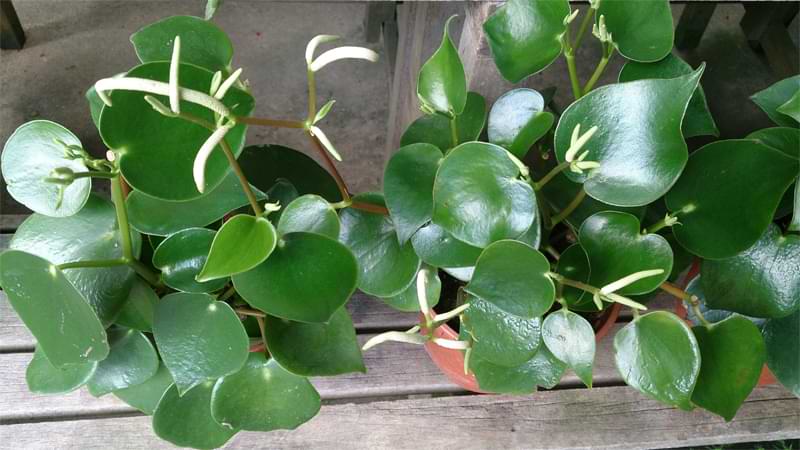
Jayde Peperomia (Peperomia polybotrya)
Also called raindrop peperomia, coin plant, or Chinese money plant, you can recognize this variety from its glossy, fleshy, solid emerald-green leaves that come to a delicate point, a lot like a raindrop!
This variety will also flower with enough natural sunlight, shooting up white “spikes” that give the plant a bit of extra interest. Bright light also helps this variety maintain its rich green color, so save this one for brighter rooms.
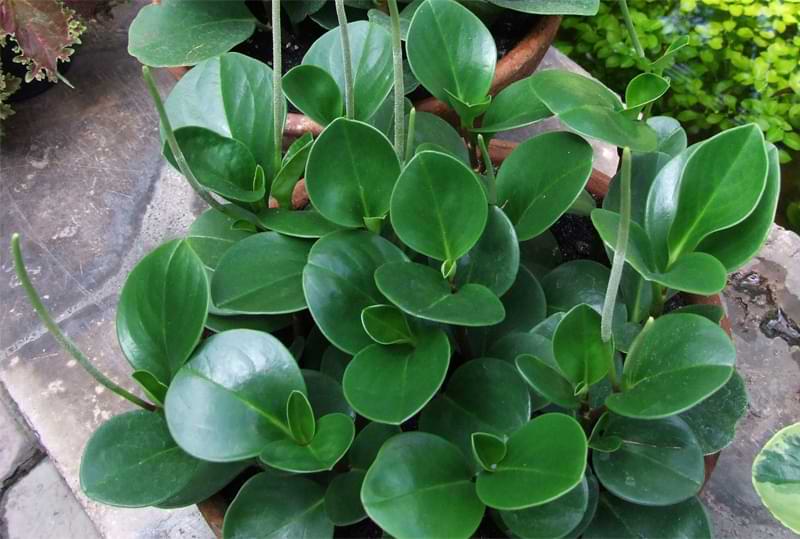
Baby Rubber Plant (Peperomia obtusifolia)
One of the best things about peperomia varieties is that they come in so many different shapes!
The baby rubber plant (also called peperomia frost) has rounded leaves with a beautiful glossy sheen. This variety also comes in plenty of beautiful variegated cultivars that may sport a range of colors such as dark green, light green, silver, yellow, or white on the edges or in a more blocky, marbled pattern.
Make sure to provide lots of bright, indirect sunlight to help this variety maintain its bright color, especially for the variegated cultivars.
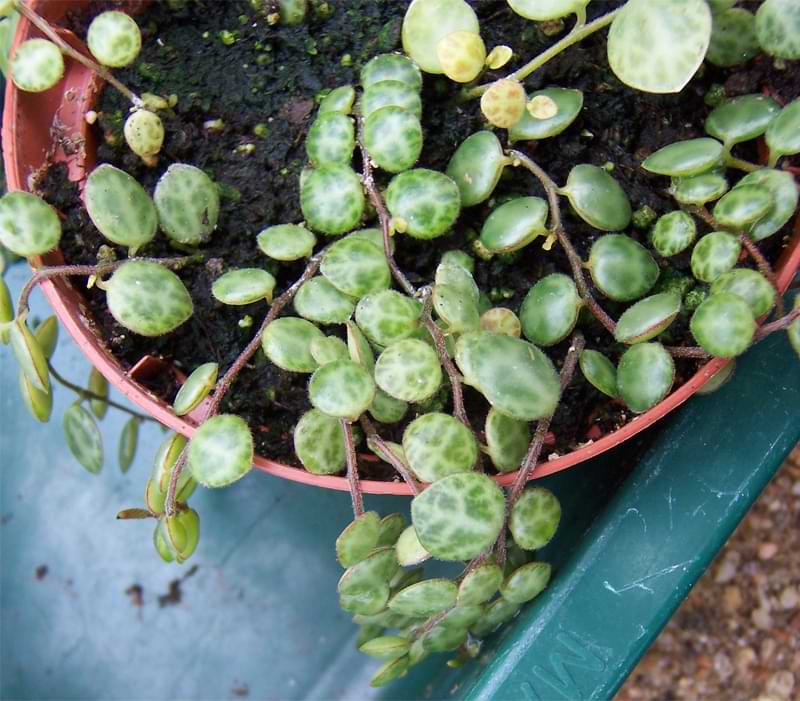
String of Turtles Peperomia Plant (Peperomia prostrata)
This variety is becoming more and more popular! You can recognize this variety by its round, tiny leaves no bigger than your thumbnail. These leaves grow on slender, trailing vines and resemble turtle shells with their spotted light- and dark-green pattern.
Pot your string of turtles in a hanging basket or let it cascade over a table or off a shelf.
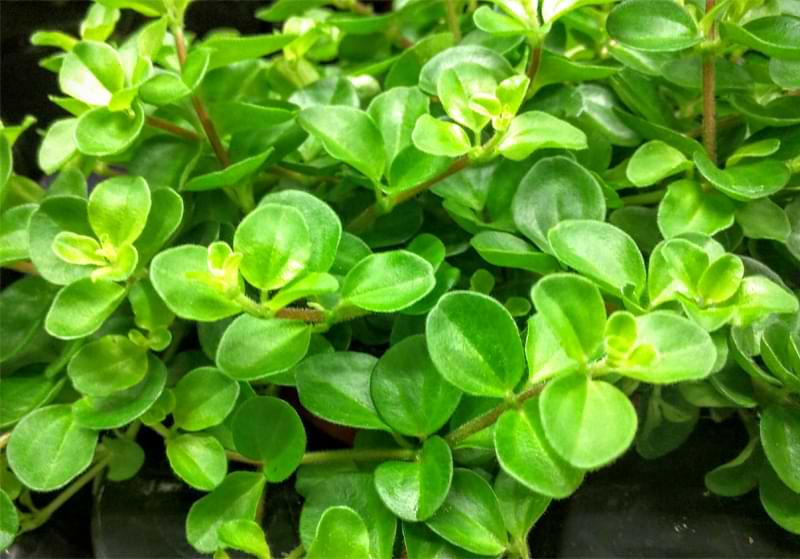
Trailing Jade (Peperomia rotundifolia)
If you’re a fan of peperomia varieties with cute, round leaves, you’ll love this variety! These fleshy round leaves are reminiscent of succulent leaves. This trailing variety is like a fun mashup of a succulent and a trailing ivy, so give it a try if you want something unusual for a darker room in your home.
Make sure to provide plenty of humidity for this variety and maintain a steady room temperature. This plant works best in hanging baskets.

Peperomia Hope (Peperomia tetraphylla)
Similar to trailing jade (but with slightly thicker leaves), peperomia hope is another trailing peperomia variety that grows leaves in bunches of three or four along its slender vines.
Like many varieties of peperomia, this slow-growing variety stays fairly compact, so it’s ideal for tight spaces. But make sure to provide enough light!

Peperomia Jelly (Peperomia clusiifolia)
Also called ginny peperomia or red-edged peperomia, this is one of the more unusual varieties of peperomia because unlike most other varieties, the leaves are much larger and curled rather than rounded or pointed.
These plants are highly variegated with dark-green, light-green, white, yellow, and cream coloring, but most of the leaves are edged (or sometimes fully tinted) with pink or red.
It also grows upward, similar to a snake plant, while staying compact, so it’s perfect as a colorful centerpiece on a table or as a striking conversation piece on a shelf. If you love flashy foliage and bright colors, this is the peperomia for you!
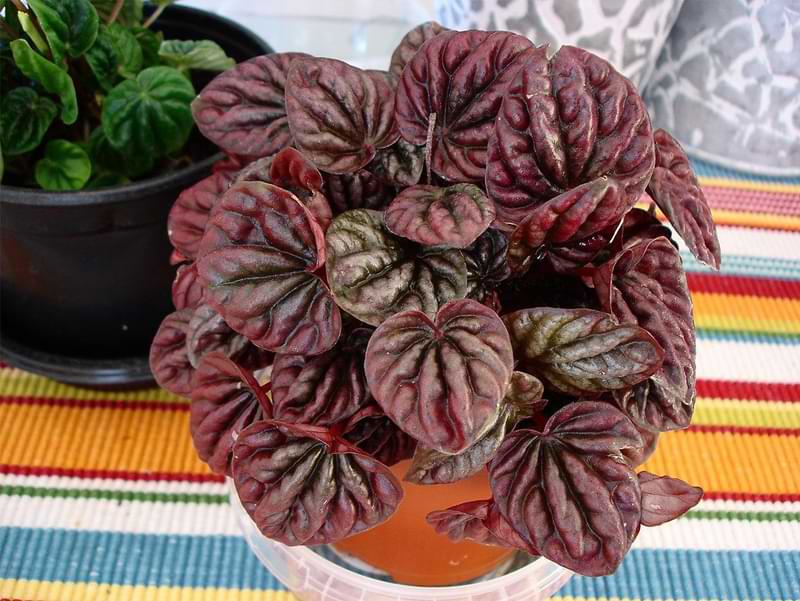
Red Ripple Peperomia (Peperomia caperata)
If you’re bored with green foliage and want to shake things up, give this variety a try! You’ll love these deep-red and purple heart-shaped leaves with their beautiful “rippled” texture. The dark color allows this variety to thrive in lower light conditions, so it’s a perfect choice for that darker room in your home that could use a little color and plant life.
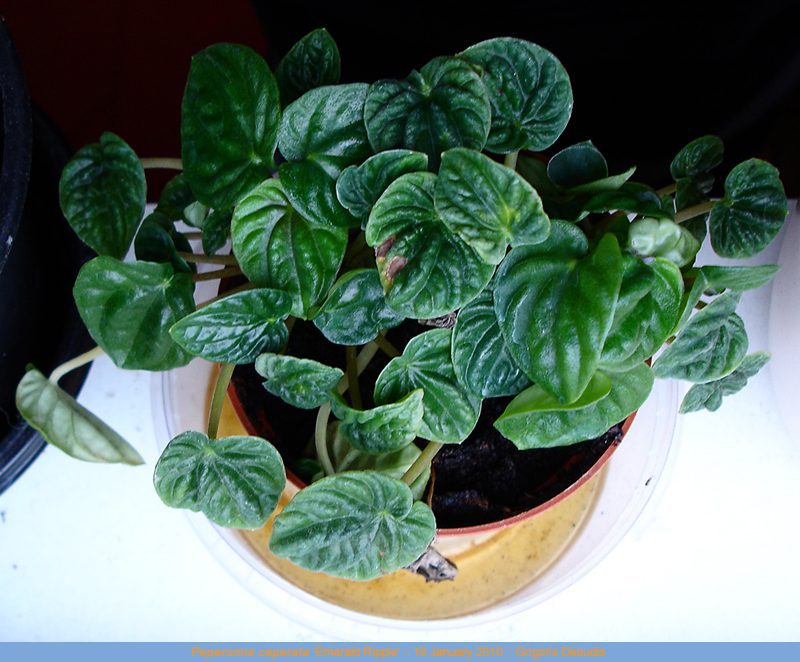
Emerald Ripple Peperomia (Peperomia caperata)
Like the red ripple variety, the leaves of the eye-catching emerald ripple peperomia are deeply textured and ridged, which gives their deep-green color a little more dimension.
Give the emerald ripple a little more light than the red ripple variety to maintain its beautiful green color!
What do you think of our Ultimate Guide to Peperomia Plants? What is your favorite variety?
Peperomia plants are some of our favorite houseplants because they come in tons of different shapes, sizes, and colors, they’re pretty easy to care for, and most of them stay fairly small, so they’re perfect for apartment living or small homes.
Don’t miss our peperomia care guide here, grab our Indoor Plant Food, and learn everything you need to care for your peperomia plants like a pro!

